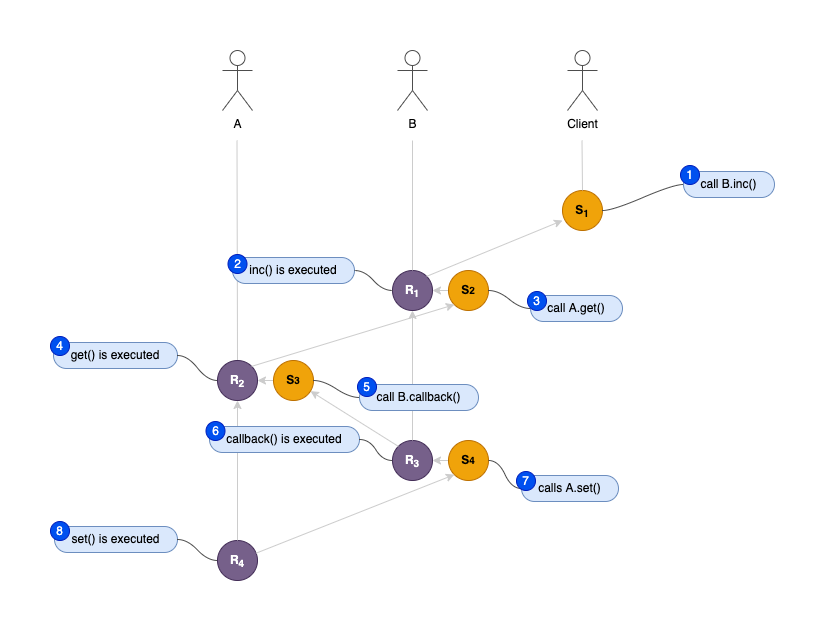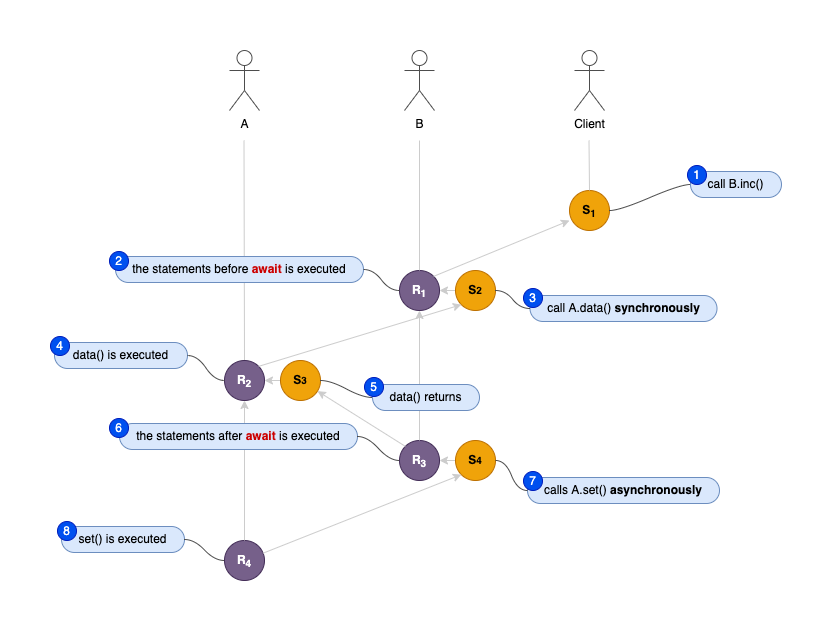# Solidity++ 0.8
The design goal of Solidity++ 0.8 is to be compatible with the syntax of Solidity as much as possible, so that developers don’t have to learn different languages to implement the same thing.
We assume that you are already familiar with Solidity, if not, please read Solidity documentation (opens new window) before starting.
Notice
The Solidity++ 0.8 is still under development, you can try a nightly build version for development or test, but do NOT deploy contracts to the mainnet until a stable version is released. Please report an issue here (opens new window) if you find a bug.
# Get Started
Let us begin with a basic example that sets the value of a variable and exposes it for frontend to access.
As above, the way of declaring a contract is syntactically similar to Solidity.
The first line tells you that the source code is licensed under the GPL version 3.0.
The next line specifies that the source code is written for Solidity++ version 0.8.0, or a newer version of the language up to, but not including version 0.9.0. This is to ensure that the contract is not compilable with a new (breaking) compiler version, where it could behave differently.
The only difference with Solidity is to replace solidity with soliditypp.
There are two interface functions in the SimpleStorage contract. The syntax of function declarations is the same as Solidity, but the semantics are different.
An interface function of a Vite contract is an async function.
Notice
An async function does not execute or return result in the request transaction but in a subsequent response transaction.
# Asynchronous Functions
Unlike those Ethereum forks, Vite is a completely different blockchain with an asynchronous VM. All message calls on Vite are fully asynchronous.
An asynchronous call is not blocked when waiting for the called function to return. The caller cannot get the return data immediately after the call. Instead, it gets a promise of return types. (The promise syntax is not implemented in the current version.)
# Callbacks
In 0.8.0, you can declare callback functions to pass return data back to the caller as follows:
After A and B are deployed, a client can invoke B.inc() function to increment A.data.
The execution is NOT in a single transaction, instead, there are multiple transactions initiated and propagated on Vite blockchain.

- When the client invokes
B.inc(), a request transaction S1(C->B) (from the client to B) is initiated. - Vite is listening all open request transactions to the address of contract B. Once S1 is discovered, Vite VM is activated and the code of
B.inc()is executed. A response transaction R1(S1) (linked to S1) will be initiated after the execution. - When the
contractA.get()statement is executed, a new request transaction S2(B->A) (from B to A) is triggered and merged to R1. (VEP-7: Merge In-Contract Request Calls into Original Response as one Transaction (opens new window)) - When S2 is accepted by contract A, the code of
A.get()is executed and a response transaction R2(S2) (linked to S2) will be initiated after the execution. - When the
sender.callback(data)statement is executed, a new request transaction S3(A->B) (from A to B) is triggered to send the result back to B. (S3 will be merged to R2). - When S3 is accepted by contract B, the code of
B.callback()is executed. A can get the latest value ofB.datafrom the parameterresultof the functioncallback. After the execution, a response transaction R3(S3) (linked to S3) will be initiated. - When the
contractA.set(result + 1)statement is executed, a new request transaction S4(B->A) (from B to A) is triggered. The data field of S4 is composed of a 4-bytes function selector ofA.set()and an argument with value ofresult + 1which is encoded in ABI format. (S4 will be merged to R3). - When S4 is accepted by contract A, the code of
A.set()is executed. The value of storage variabledatais set to the new value from the calldata of S4. After the execution, a response transaction R4(S4) (linked to S4) will be initiated.
# Await Expressions
In 0.8.1, await operator is introduced. The await is used to wait for an asynchronous function to return.
The following code shows the usage of await:
It's not required to declare callbacks explicitly in 0.8.1, the solppc compiler will generate callbacks for each await expression under the hood.

- When the client invokes
B.inc(), a request transaction S1(C->B) is initiated. - Once S1 is dicovered and accepted, the code of
B.inc()is executed. - When the
await contractA.data()expression is executed, a new request transaction S2(B->A) is triggered. The VM will halt immediately after executing theawaitexpression and a response transaction R1(S1) will be initiated. (S2 and R1 are melt into one transaction.) - When S2 is accepted by contract A, the code of
A.data()is executed. This getter function is generated automatically by the compiler. There is no explicit callback invocation inA.data(). Vite VM can infer that the call is synchronous and need a callback. It will initiate a new request transaction S3(A->B) when the function returns. In addition, a response transaction R2(S2) will be also initiated. (S3 and R2 are melt into one transaction.) - When S3 is accepted by contract B, a compiler-generated callback is executed. Vite VM will unpack the arguments from the calldata of S3, then jump into the code after the await expression. At this point, the latest value of
A.datais ready for the following assignment statement, and the rest of the code will be executed subsequently. When thecontractA.set(result + 1)statement is executed, a new request transaction S4(B->A) is triggered. The data field of S4 is composed of a 4-bytes function selector ofA.set()and an argument with value ofresult + 1which is encoded in ABI format. Then theB.inc()function ends, a response transaction R3(S3) will be initiated. (S4 and R3 are melt into one transaction.) - When S4 is accepted by contract A, the code of
A.set()is executed. The value of storage variabledatais set to the new value from the calldata of S4. After the execution, a response transaction R4(S4) will be initiated.
According to the above description, the code in 0.8.1 has a different syntax but the same semantics as the code in 0.8.0. The compiler and VM do a lot of mechanical work for the developer under the hood.
Notice
The await operator is only available after a Vite mainnet upgrade to enable the required instructions.
Important
A function in Solidity++ not equivalents to a tranction on Vite, so functions are not guaranteed to have ACID semantics. The example above demonstrates a potential Isolation Failure issue which is known as Lost Update Problem.
Consider the situation that B.inc() is invoked by two simultaneous requests, the corresponding responses both read A.data and then update it, the effects of the first update will be overwritten by the second update. In other words, after two function calls, A.data may have only increased by 1.
# Contribution
The Solidity++ is open sourced here (opens new window).
We welcome contributions from anyone interested, including reporting issues, fixing bus, commit new features and improving or translating the documentations.